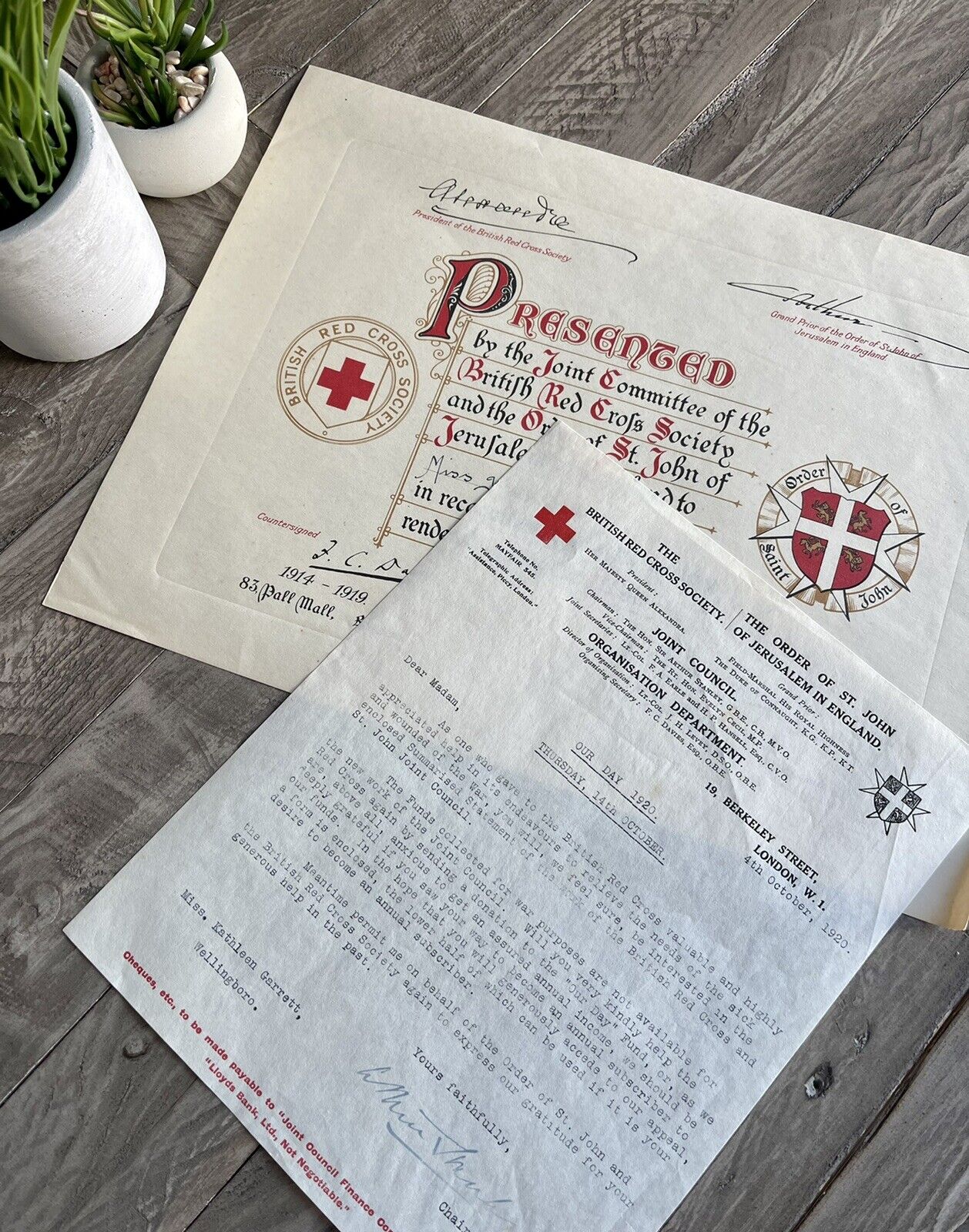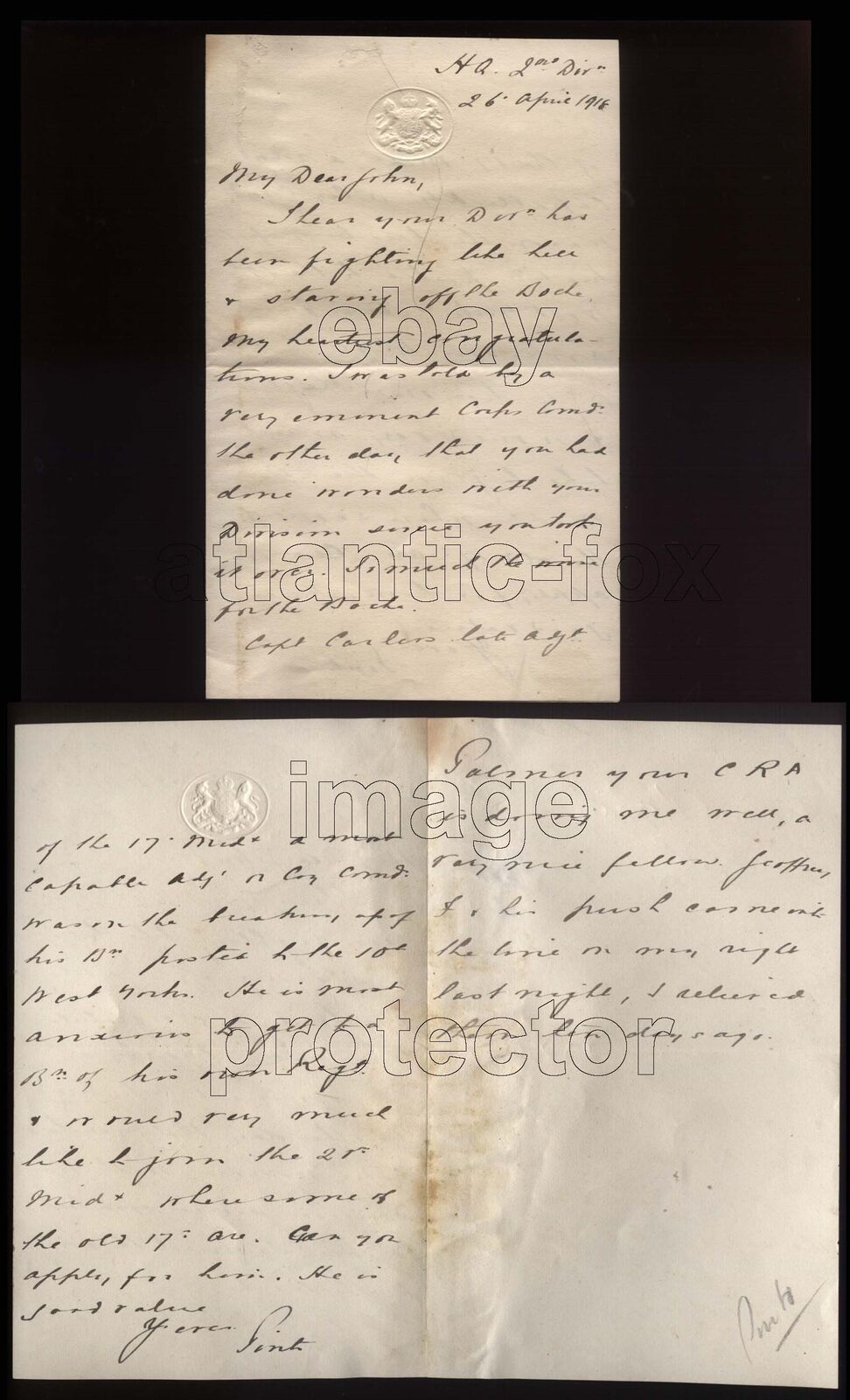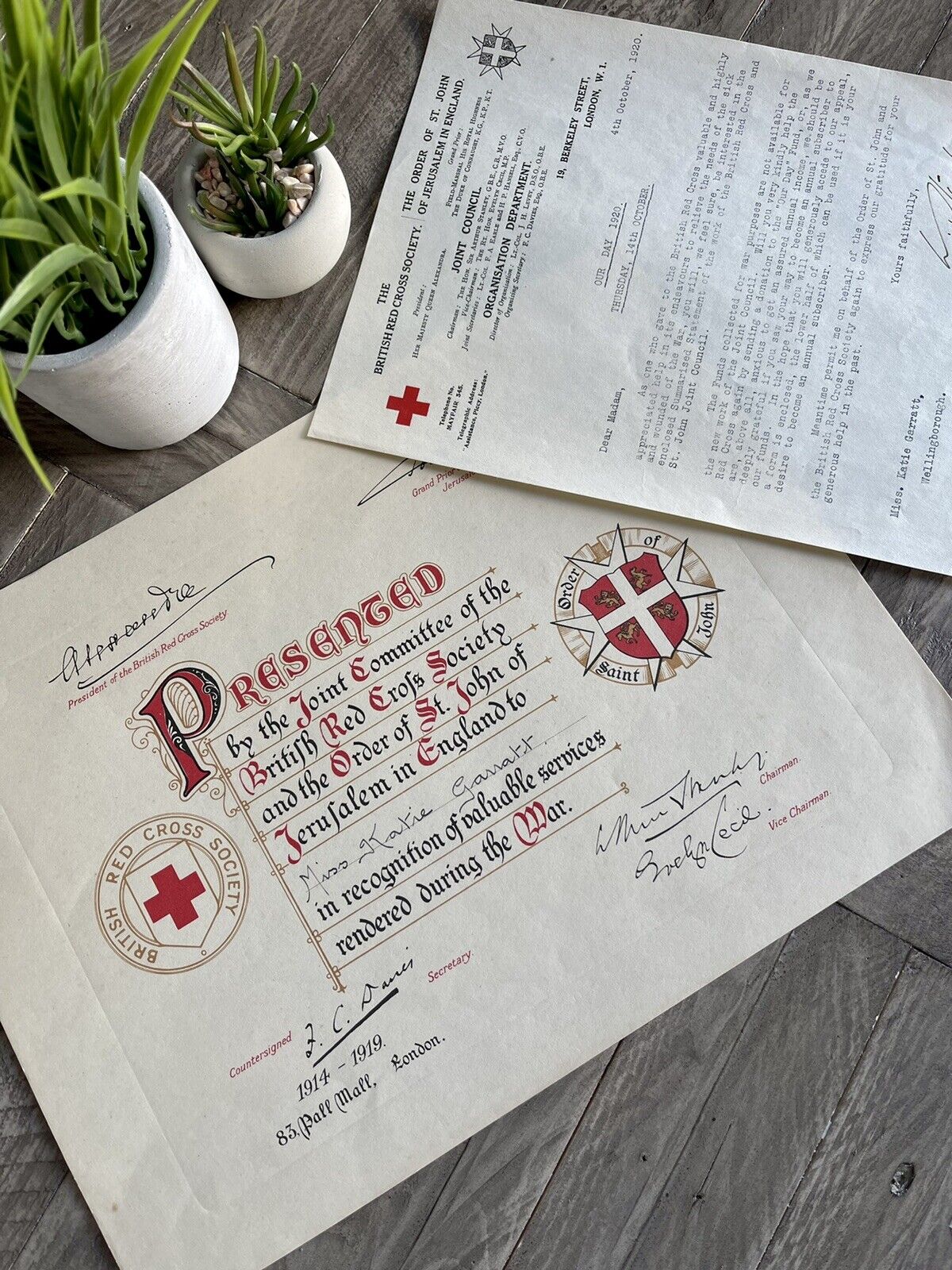-40%
1932 A/L Lieutenant General Sir William Pulteney, GCVO, KCB, KCMG, DSO
$ 76.28
- Description
- Size Guide
Description
1932 A/L Lieutenant General Sir William Pulteney, GCVO, KCB, KCMG, DSOThis product data sheet is originally written in English.
1932; Fine Autograph Letter from Sir William PulteneyPulteney at 3 Lower Berkeley Street, Portman Square, London to Sir John Ponsonby,confirming he would second Colonel Brooke Purdon for membership to the Shikar Club.
The Shikar Club is an international sporting club founded in London in 1909 by Old Boys of Eton and Rugby to champion the cause of hunting and in particular big game hunting. Its founding members included: Frederick Courtney Selous, P.B. van der Byl and Charles Edward Radclyffe
SEE OTHER SIR JOHN PONSONBY COLLECTION ITEMS IN OUR EBAY SHOP
Lieutenant General Sir William Pulteney Pulteney, GCVO, KCB, KCMG, DSO (18 May 1861 – 14 November 1941) was a British general during the First World War.
William Pulteney left school (Eton) at the age of 16. He did not attend Sandhurst, joining the Regular Army - the Scots Guards - from the Militia; nor did he subsequently attend Staff College. He made his name as a junior officer on secondment in a number of overseas campaigns - in Uganda (where he won the DSO) and the Congo - before commanding the Scots Guards in the South African War. A highly successful commanding officer, he was rewarded with promotion and command of a column (a small, mobile brigade-group), and here he caught the eye of a number of senior officers, including the future Field Marshal French. Back home, Putty moved in aristocratic and royal circles - a crack shot, he was a popular shooting party guest - and was described as a friend by the Prince of Wales. By 1914, Putty was commanding a division in Ireland and was selected as one of the three corps commanders for the BEF. He was to serve in that appointment for almost three and a half years.
Lieutenant General Sir William Pulteney might well have been the inspiration for Blackadder`s nemesis, General Melchet. Although almost unknown to the public, then as now, Pulteney - nicknamed ‘Putty’ - was the longest serving corps commander in the First World War. He has been described variously as ‘one of the war’s “donkey’s” and “butchers and bunglers”’, ‘notorious for his ignorance of staff work’, and a general who ‘never visited the trenches’. Indeed, his chief of staff described him as ‘the most completely ignorant general I served during the war, and that is saying a lot’.
His corps’ enormous casualties on the first day of the Somme have been attributed to his failure to use his artillery effectively, and the costly failure of a large counter-attack later in the battle to his rejection of advice about the use of tanks in woods. He also stands accused of ignoring warnings of a major German counter-attack during the battle of Cambrai, and that ‘paralysis of command’ subsequently reigned at his headquarters.
Three month after the battle, Field Marshal Haig sent him home. It has been suggested that the only reason he was not replaced much earlier was the result of royal patronage and aristocratic connections.
Pulteney, Sir William Pulteney (1861–1941), army officer, was born at Rectory House, Ashley, near Market Harborough but just in Northamptonshire, on 18 May 1861, the youngest son of Richard Thomas Pulteney (1811–1874) of Hargrave, Stansted, Essex, rector of Ashley, and his wife, Emma (d. 1884), third daughter of Maximilian Dudley Digges Dalison of Hamptons, near Tonbridge, Kent. He was educated at Eton College (1875–7), where he was undistinguished in sport or otherwise. In October 1878 he entered the army by the militia ‘back door’, being commissioned second lieutenant in the Oxford militia. In April 1881 he was gazetted second lieutenant, 1st battalion, Scots Guards. Promoted lieutenant in July 1881, he served with them in the 1882 Egyptian campaign, including at Tell al-Kebir. He was adjutant of the 2nd battalion from February 1891 to February 1895, and was promoted captain in May 1892.
The guards did not normally serve overseas, so ambitious officers seeking active service and medals needed to transfer elsewhere. From February 1895 to September 1897 Pulteney served with the Uganda rifles in the Uganda protectorate, against King Kabarega's Banyoro and the Nandi (DSO, 1896). A good shot, he enjoyed big-game hunting. He returned home in 1897, and in May was promoted major. From December 1898 to June 1899 he was vice-consul at Boma, capital of the Congo Free State. He served with the Scots Guards in the South African War. Brevet lieutenant-colonel from November 1899, from April 1900 to January 1901 he commanded the 1st battalion, Scots Guards, and in November 1900 was promoted brevet colonel. Latterly he commanded an anti-guerrilla column, mainly in the Transvaal.
Promoted colonel in January 1908, from February 1908 to March 1909 Pulteney was brigadier commanding the 16th brigade in southern Ireland, and in January 1909 was promoted major-general. From July 1910 to July 1914 he was general officer commanding the 6th division in southern Ireland. In 1914, as the Ulster crisis escalated, British ministers planned a 'big demonstration' (Beckett, Curragh Incident, 139), which led in March to the Curragh incident with Hubert Gough and other officers of the 3rd cavalry brigade. Pulteney was involved in planning the 'demonstration', but not in the 'mutiny'.
In August 1914 the British expeditionary force comprised two corps and a cavalry division. At the end of August, the 3rd corps was formed with Pulteney, promoted temporary lieutenant-general on 5 August, its general officer commanding. However, he was the least able and—having attended neither the Royal Military College at Sandhurst nor the Staff College—the least qualified of the corps commanders. He became notorious for his ignorance of staff work. His army nickname was Putty and according to Charles Bonham-Carter, his chief of staff in 1917, he was 'the most completely ignorant general I served during the war and that is saying a lot' (Travers, How the War was Won, 6). His appearance was unmilitary, and one observer likened him to 'a peaceful country squire' (Bourne, 239). It was said that the best officers were appointed to the 3rd corps to compensate for his deficiencies: in 1914, for example, his staff included STANLEY Maude. Exceptionally, Pulteney continued to command the 3rd corps for most of the war, which surprised his subordinates; presumably well-placed friends helped his survival. He was promoted lieutenant-general in May 1915.
In 1916 the 3rd corps was part of Rawlinson's Fourth Army in the Somme offensive. The artillery of the 3rd corps failed adequately to cut the German wire, and on the first day of the battle of the Somme (1 July) Pulteney did not use the artillery to bombard the German front line sufficiently to suppress enemy fire, but moved it on to distant targets. The attack by the 3rd corps failed with heavy casualties. In August 1916 Haig and Rawlinson planned another Somme offensive; Haig intended a breakthrough, cavalry attack, and decisive victory. The main difficulty lay in the 3rd corps's area: High Wood, which was treacherous terrain. Rawlinson left the local planning to Pulteney who decided—against the tank officers' advice that the shattered tree stumps made it impassable to tanks—that the tanks would quickly capture High Wood, which he required the 3rd corps's 47th division, London Territorials, commanded by Major-General Charles Barter (1857–1931), to enter. Barter agreed with the tank officers and argued against Pulteney's plan, wanting effective artillery bombardment, and the tanks to flank the wood, firing into it, but Pulteney overruled him. In the attack on 15 September 1916 (the battle of Flers-Courcelette) the few tanks failed against High Wood and the artillery did not bombard where the tanks were supposed to operate. Although the 47th division finally took High Wood, aided by the successful flanking infantry and a ‘hurricane’ trench mortar bombardment, this was planned as only their first objective for the day, and they achieved it at the cost of over 4500 casualties. Their difficulties and losses were almost entirely due to Pulteney's planning. Pulteney blamed Barter, alleging 'wanton waste of men' (Sheffield, Somme, 121), and persuaded Haig to dismiss him.
Knighted KCB in 1915, Pulteney was made KCMG in 1917. On 17 October 1917 he married Jessie Alexandra (b. 1875), fourth daughter of the Irish industrialist and philanthropist Sir John Arnott, first baronet.
In 1917 the 3rd corps, then in Sir Julian Byng's Third Army, had a leading role in the battle of Cambrai on 20 November, when the first ever mass tank attack, with artillery and infantry, achieved spectacular success. Subsequently Pulteney ignored warnings of a German counter-attack and refused the neighbouring 7th corps's request for heavy artillery for a pre-emptive bombardment of the German line. The German counter-attack on 30 November, by infiltrating storm troopers, was devastating. Soon much of the 3rd corps was in rapid retreat, and at corps headquarters there was paralysis of command. The Germans captured many prisoners, guns, and tanks, and recaptured much of the ground they had lost. The British public and parliament were shocked. Byng, Haig, and Smuts officially, if unconvincingly, exonerated the formation commanders and blamed subordinate officers and other ranks; Lloyd George later wrote that the official inquiry was 'an utter sham' (Lloyd George, 2.1339). Nevertheless three corps commanders were sent home; Pulteney in February 1918, a change 'long overdue' (Bourne, 239). 'It is hard to see how he managed to survive for so long', one historian has commented (Holmes, 217). Obtuse and underqualified, he made costly mistakes and may be considered one of the war's 'donkeys' and 'butchers and bunglers'.
From February 1918 to April 1919 Pulteney commanded the 23rd corps, retained in Britain against possible enemy raids. Appointed KCVO in July, from May to September 1918 he accompanied Prince Arthur of Connaught on a military mission to Japan. He retired in January 1920, and from then until his death was gentleman usher of the black rod to the House of Lords; he was appointed GCVO in June 1930. In retirement he was active in ex-service organizations, notably the Ypres League. He died on 14 May 1941 at Pines Hill, Stansted, Essex. His funeral took place at Ashley, Northamptonshire; he was survived by his wife
Major-General William Brooke Purdon DSO OBE MC (28 November 1881 – 1 December 1950)[1] was an Irish soldier, physician and medical administrator
. Towards the end of his life he was a representative of the Northern Ireland Government in London and for four years was an Honorary Surgeon to the King. In his youth Purdon was a rugby footballer of some note, representing several Irish clubs and was selected to play international rugby for Ireland on three occasions in 1906.
William Purdon was born in Belfast in 1881. He was educated at Royal Belfast Academical Institution and Methodist College Belfast before matriculating to Queen's College, Belfast where he studied medicine.[2][3][4] He graduated as Bachelor of Medicine in 1906 and joined the Royal Army Medical Corps.[4] In 1913 he took the Doctor of Public Health, and it was his specialisation in hygiene that he made his name after the war. During the First World War Purdon served the British Army with distinction. He was awarded the Distinguished Service Order and the Military Cross and was mentioned in dispatches three times during the conflict.
In 1923 he was appointed Officer of the Order of the British Empire and Officer of the Most Venerable Order of the Hospital of St John of Jerusalem.
From 1930 to 1934 he was Assistant Director of Hygiene at the War Office
and from 1934 to 1935 he was Deputy Director Medical Services British Troops in Egypt.[5] From 1935 to 1938 he was Professor of Hygiene at Royal Army Medical College and during the Second World War he was medical supervisor of Queen Mary's Hospital, Roehampton.[4] From 1938 to 1941 he was Honorary Surgeon to King George VI. In 1940 he was awarded the post of Deputy Director Medical Services Western Command.[5] After retiring from the British Army he took up the role of Agent in London of the Northern Ireland Government
:
Powered by SixBit's eCommerce Solution
1932; Fine Autograph Letter from Sir William PulteneyPulteney at 3 Lower Berkeley Street, Portman Square, London to Sir John Ponsonby,confirming he would second Colonel Brooke Purdon for membership to the Shikar Club.The Shikar Club is an international sporting club founded in London in 1909 by Old Boys of Eton and Rugby to champion the cause of hunting and in particular big game hunting. Its founding members included: Frederick Courtney Selous, P.B. van der Byl and Charles Edward RadclyffeSEE OTHER SIR JOHN PONSONBY COLLECTION ITEMS IN OUR EBAY SHOP Lieutenant General Sir William Pulteney Pulteney, GCVO, KCB, KCMG, DSO (18 May 1861 – 14 November 1941) was a British general during the First World War. William Pulteney left school (Eton) at the age of 16. He did not attend Sandhurst, join
Country/ Organization
Great Britain
Service
Army
EAN
Does Not apply
Document Type
Manuscript letter
Family Surname
Pulteney
Certified Genuine
Genuine
Theme
Shikar Club
Era
1914-1945
Famous Persons in history
Sir William Pulteney Pulteney
Type
Documents & Maps
Conflict
World War I (1914-1918)








